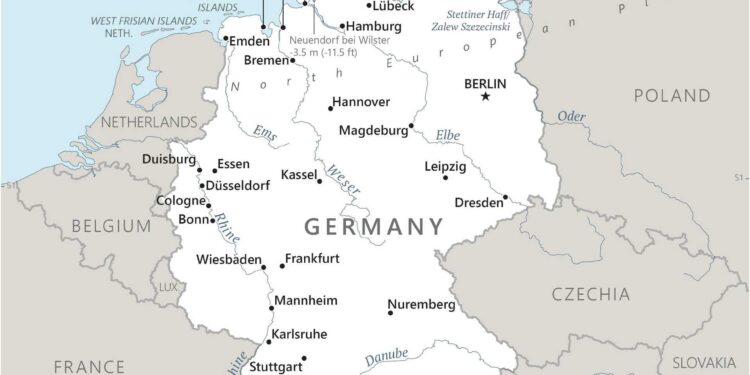Germany and the United Kingdom have officially signed a landmark defense pact, marking a significant step in their bilateral military cooperation. The agreement, unveiled in a joint announcement, outlines a detailed timeline for the deployment and integration of advanced precision strike capabilities, signaling a new era of strategic alignment between the two nations. This pact not only strengthens their joint defense posture but also reflects broader efforts to enhance European security amid evolving geopolitical challenges.
Germany and UK Forge Strategic Defense Alliance to Enhance Joint Military Capabilities
The newly inked agreement between Germany and the United Kingdom marks a significant leap forward in their collaborative defense efforts, aiming to bolster joint military readiness and precision strike capabilities. Central to this partnership is the development of an integrated command structure designed to enable rapid decision-making in high-stakes environments. Both nations are committing substantial resources toward modernizing their armed forces, emphasizing cyber warfare resilience, intelligence sharing, and next-generation weapon systems. Analysts highlight that this pact not only deepens bilateral ties but also sends a clear message of unity within the broader NATO framework.
Key components of the alliance include:
- Joint development of advanced missile technologies with a focus on deep precision strike
- Regular combined training exercises to enhance interoperability across land, air, and maritime domains
- Shared investment in AI-powered battlefield analytics and drone swarm tactics
- Coordinated defense procurement strategies to maximize economies of scale
| Capability | Germany’s Contribution | UK’s Contribution |
|---|---|---|
| Precision Strike Tech | Advanced missile guidance systems | Long-range strike platforms |
| Command and Control | Integrated communication networks | Real-time AI decision support |
| Cyber Defense | Robust cyber threat monitoring | Offensive cyber warfare tools |
Revealing the Precision Strike Timeline Insights and Operational Milestones
Germany and the United Kingdom have unveiled a detailed timeline for their joint precision strike capabilities, marking a significant advancement in European defense cooperation. The pact outlines phased development milestones set to transform their collaborative efforts into operational readiness by 2028. Key aspects include the integration of cutting-edge missile technologies and coordinated command infrastructures designed to enhance rapid response effectiveness across NATO allies.
Critical operational milestones emphasize:
- 2024-2025: Prototype testing of next-generation guided munitions
- 2026: Joint live-fire exercises in allied training zones
- 2027: Full system interoperability trials between Germany and UK defense units
- 2028: Deployment of precision strike forces within designated theaters
| Milestone | Projected Completion | Operational Impact |
|---|---|---|
| Prototype Testing | Q3 2025 | Validate new missile tech |
| Joint Exercises | Q1 2026 | Refine tactical cooperation |
| Interoperability Trials | Q4 2027 | Ensure seamless command integration |
| Force Deployment | Mid 2028 | Enhanced rapid strike capability |
Recommendations for Strengthening European Defense Integration and Rapid Response Coordination
Enhancing strategic ties across Europe requires a multi-dimensional approach focusing on interoperability and streamlined decision-making. Joint procurement programs and shared research initiatives can reduce redundancy while accelerating the development of next-generation capabilities, such as precision strike systems highlighted by the Germany-UK pact. In parallel, ‚ā¨armament coordination centers should be empowered to standardize training protocols and harmonize operational doctrines among member states, forging a cohesive rapid response force capable of swiftly addressing emerging threats.
Operational agility depends on robust communication infrastructure and integrated command networks. Establishing a pan-European rapid response coordination cell would facilitate real-time intelligence sharing and synchronized deployment strategies. Below is a concise overview of key action points for boosted integration:
- Unified command frameworks to reduce bureaucratic delays
- Common logistics networks ensuring supply chain resilience
- Cybersecurity enhancements protecting joint digital assets
- Regular joint exercises to test interoperability and refine tactics
| Focus Area | Immediate Goal | Impact on Rapid Response |
|---|---|---|
| Procurement Synergy | Reduce time-to-field new tech | Speeds deployment cycles |
| Command Integration | Streamline operational decisions | Enhances joint mission efficiency |
| Communications Infrastructure | Secure and fast data sharing | Improves situational awareness |
| Training Consistency | Align tactical skills | Ensures cohesive force action |
Insights and Conclusions
As Germany and the United Kingdom formalize their defense pact, the announcement of a detailed precision strike timeline underscores a renewed commitment to strategic collaboration amid evolving global security challenges. This agreement not only enhances interoperability between the two nations’ armed forces but also signals a significant step toward strengthening NATO’s collective defense posture. Observers will be closely monitoring how this partnership influences broader regional dynamics and defense strategies in the months ahead.
















